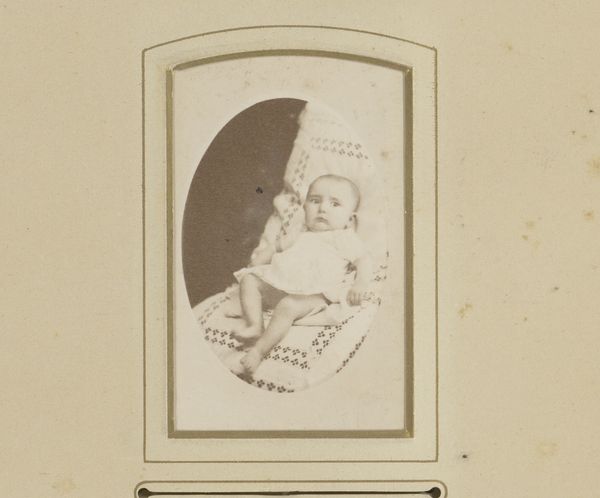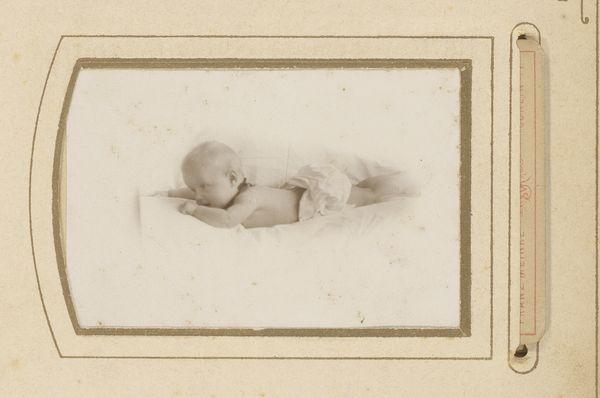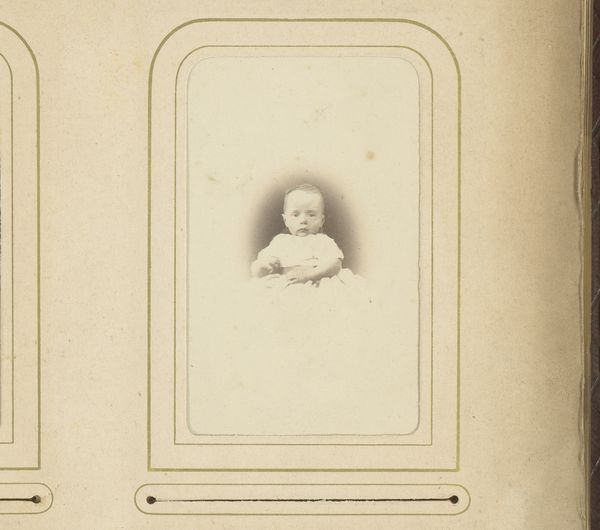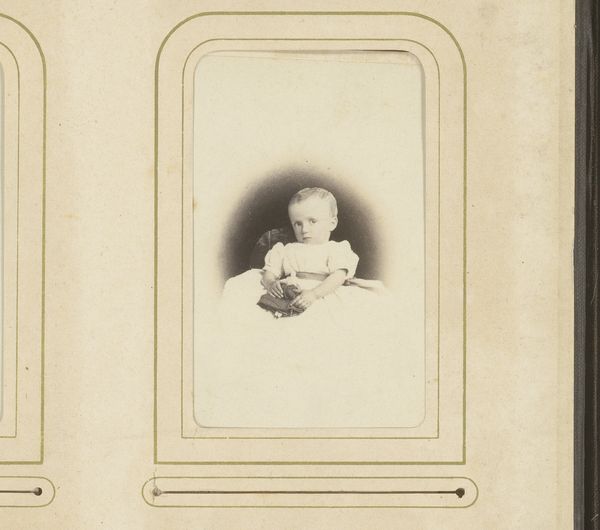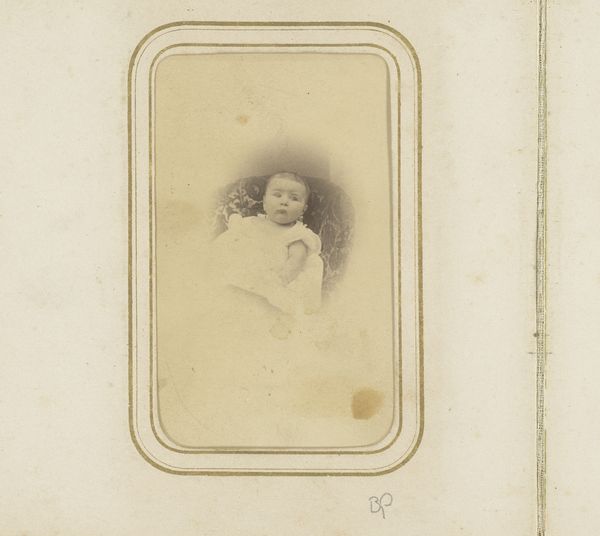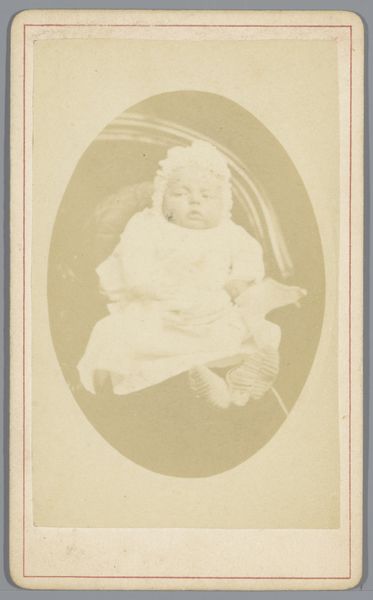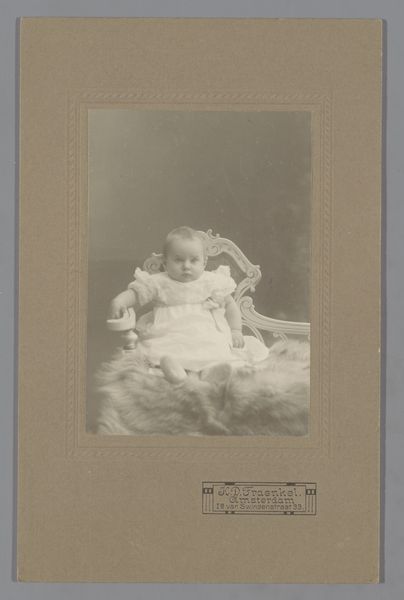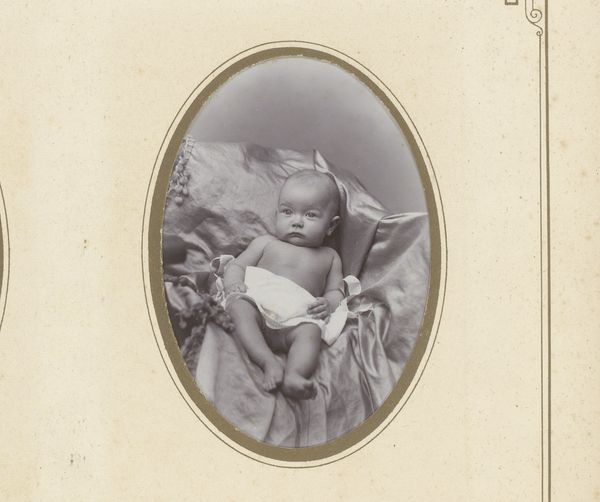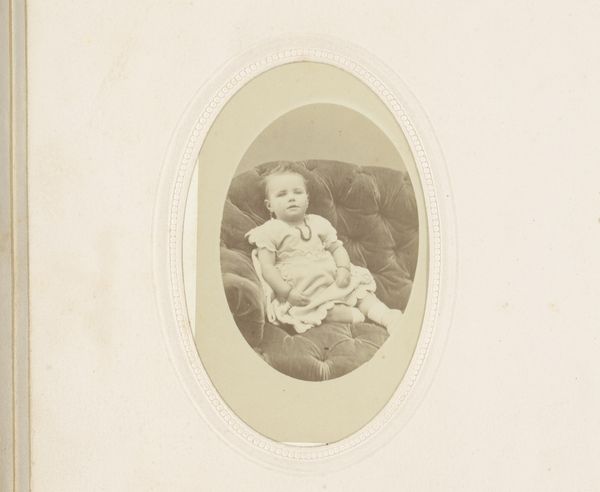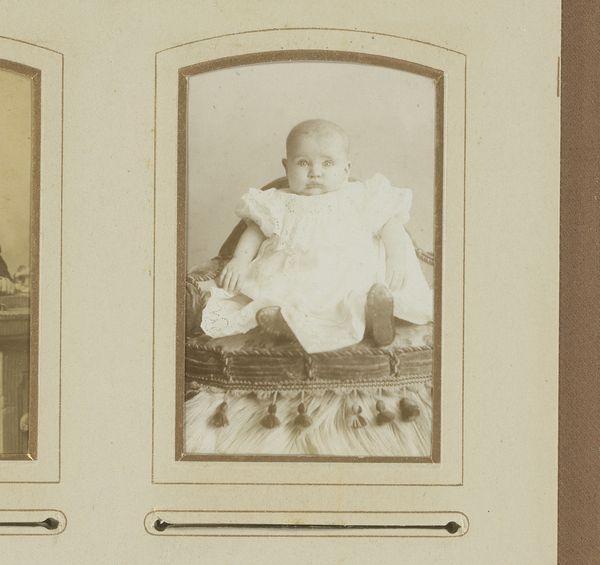
#
aged paper
#
toned paper
#
parchment
#
tea stained
#
child
#
19th century
#
watercolour illustration
#
golden font
#
watercolor
#
historical font
#
columned text
Dimensions: height 83 mm, width 53 mm
Copyright: Rijks Museum: Open Domain
Editor: So, this is "Portret van een kind, zittend op een stoel" by Johannes Hendrikus Kramer, made in 1885. It seems to be a watercolor on paper, though the paper has aged beautifully. It's a sweet image, but I find the baby’s direct gaze quite arresting. How do you interpret the piece? Curator: This image is fascinating because it reveals so much about the social and cultural values placed on children, and how those values were disseminated through portraiture in the late 19th century. The formality of the setting—the plush chair, the carefully composed pose—suggests a desire to elevate the status of the child within the family, marking their presence in the world. It speaks to the increasing emphasis on childhood as a distinct and cherished stage of life. Do you notice the presentation? Editor: Yes! How the picture looks like it belongs in an album. Were formal portraits like these common at that time? Curator: Absolutely. Photography became more accessible, fueling the demand for these keepsakes among middle-class families. The image functions not just as a record of likeness, but as a demonstration of social standing and adherence to societal norms. Note how it looks to have been purposefully distressed. How do you think that would influence today’s audience? Editor: I see your point. By including imperfections that mirror history, this artwork invites conversation with modern audiences. I initially interpreted the gaze as just the focus of an infant, but I now appreciate it captures how society has placed importance on familial lineage throughout time. Curator: Exactly! Understanding its place in visual culture allows us to examine what we want the image to show us, which prompts examination of cultural patterns in the current period as well. Editor: That’s definitely something to consider. Thanks!
Comments
No comments
Be the first to comment and join the conversation on the ultimate creative platform.
